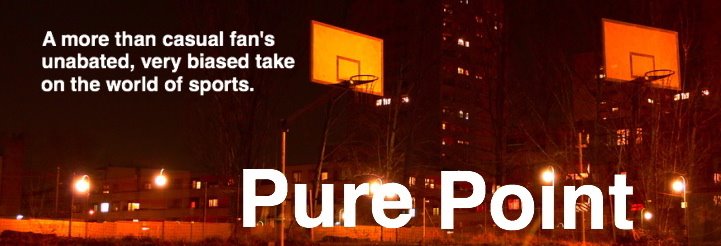I'm not an avid college sports fan by any means. I've probably watched only one college football game in full (The Vince Young-Matt Leinart Rosebowl) so I don't pretend to know a thing about that. When it comes to college basketball, I consider myself slightly more knowledgable just because I started following high school basketball when my high school (Newton North) made a brief appearance in both the Rivals and the Yahoo Sports Power Rankings. Moreover, as a Dookie at heart, I guess it makes sense to follow basketball more than football.
When word came way that the text messaging ban was not going to be overturned, I was notably indifferent. It doesn't matter to me how kids are being recruited all that much, as long as it's not along the line of, "We'll give you 250,000 dollars to come to our school." Also, I hadn't heard a lot about the sanction on text-messaging, so reading article titles like, "Text messaging ban still in place," or the like seemed more like lack of news than news.
However, apparently a separate issue arose while (probably not actually at the same time) they were discussing the appeal: that of adding new Division I programs.
The board also approved a four-year moratorium on adding more Division I schools.
Next year, there will be 331 schools competing at the Division I level and Berst said 23 more are being grandfathered in. But the board wants a committee to establish new Division I standards before approving any more applicants.
"We've seen a continuing desire to move to Division I and we just think it's time to stop and vette that process and take a look at the impact of growth," Berst said.
Essentially, the NCAA will allow 23 additional programs to compete at the D-I level, and then put a halt to adding new schools for four years.
It's understandable why the NCAA would want to do this from a level of competition standpoint. D-II schools that move up to D-I are going to be notably weaker than established programs. Moreover, with each additional program that enters, there is increasing talk about expanding the tournament field (in terms of basketball), and having more wide-spread championships.
On the other hand, the possibly more pressing issue is why the colleges and universities want the opportunity to compete at the higher level. The noble reason is that the athletic department feels that the program is able to compete and do well against stronger competition than what is offered at the level that they are currently playing. The more obvious and probably more true reason is that the bigwigs think that moving up a division will lead to higher ticket prices for events and by extension higher revenue for the school.
This reminded me of something I had come across in my younger years. A while ago, I was applying for an internship at an economic thinktank in Washington called COMPASS (Competition Policy Associates). While doing research on that company to prepare for my interview, I came across this study they did a while back on the effect that moving up a Division had on the athletic department of a school (A ha!). The most interesting (to me) point that was made in this study (It's 50 pages; I read the entire thing. I don't expect you to) was this one:
Every school for which we have data experienced a decline in netoperating revenue excluding institutional support, state support, and student activity fees when moving from Division II to Division I. The median decline was almost $2 million and 90 percent of schools switching experienced a reduction of more than $740,000.
They go on to say that so much more money is poured into the athletic department, in terms of recruiting and coaching among other things, but each additional dollar spent results in much less than an additional dollar earned.
So it seems that if the schools made the move for the money, then they weren't very successful. But the study debunks other possible reasons the school might have had in making the change too:
Although some of the econometric specifications suggest a positive effect from increased athletic spending, the bulk of the analysis suggests no relationship. Our conclusion is that within Division II, there is no robust relationship between athletic spending and alumni giving; there is no robust relationship between athletic spending and average incoming SAT scores; and no robust relationship between athletic spending and the university's acceptance rate.
In addition to these quantifiable effects, athletic programs may have non-quantifiable effects on higher education. For example, it is possible that athletic programs boost "school spirit" and the enjoyment of the educational experience in ways that do not manifest themselves in measureable indicators. On the other hand, it is also possible that athletic programs lead to a "beer and circus" environement in which the principles and standards of higher education are eroded by the distraction of a non-academic presence on campus.
Those are promising words to hear for an athletic director who wants to move to the next level of competition. Maybe they actually do make the switch just for the challenge, because they think they are capable. Universities certainly have deep pockets and maybe they think that the school can take a hit financially to further the cause of their athletics, always a long standing tradition and source of bragging rights. It is certainly possible that the most honest of causes for the move is the correct one.
The study states that interviews with campus decision makers who decided on moving up to Division I revealed that they "did not engage in detailed or rigorous const-benefit analyses before making the switch." It appears from that at least, that money wasn't necessarily on their mind when they made their decision; a comforting thought for us sports fans.
(Side note: I didn't get the job, possibly because I was over-engrossed in their least consequential study.)








0 comments:
Post a Comment